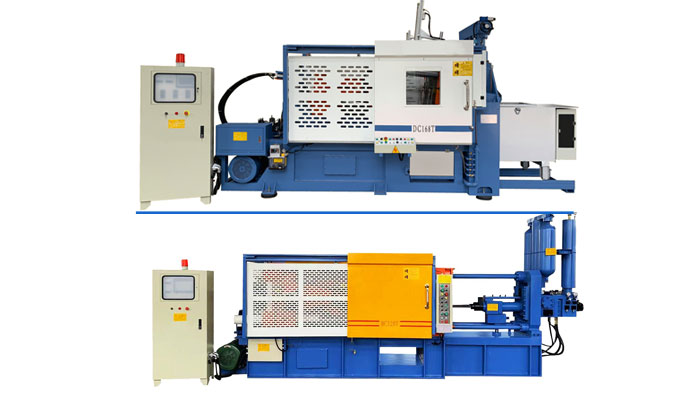The Difference between hot chamber die casting machine and cold chamber die casting machine

Temperature range of hot chamber die casting and cold chamber die casting
Hot chamber machines handle low temperature non-ferrous alloys. The maximum temperature of the alloys that can be safely die-cast in a hot chamber machine is around 450°C, including alloys such as zinc, magnesium and lead. In contrast, the cold chamber machine handles high temperature non-ferrous alloys. It typically handles metal alloys with temperatures of 600°C or higher, including alloys such as aluminum, copper, and brass.
Location of the furnace
Alloy melting furnaces are located in different places and are used for both processes. The hot chamber equipment has a built-in furnace to melt the metal. Therefore, the metal is sent directly through the gooseneck to the mold cavity. In a cold chamber die casting unit, the melting furnace is located externally. The melted metal has to be delivered to the machine using automatically or manually operated ladles.
Production time
Hot chamber machines provide a significantly higher casting cycle than cold chamber machines. Although both machines work very similarly, cold chamber casting has a longer cycle time due to manual handling of the molten metal.
Mould life
Hot chamber and cold chamber die casting machines are constructed from the same materials. Hot chamber casting uses low melting point alloys, which have less effect on the mold. Therefore, it lasts longer. Conversely, the mold conditions in cold chamber machines degrade more quickly because the molten metal has a higher temperature. Die casting alloys are melted in a furnace located inside the machine and die casting alloys are melted in a separate furnace located outside the machine The casting cycle is significantly shorter and therefore has a higher production capacity; therefore, the production capacity is smaller for high melting point alloys, has a shorter tool life and requires minimal safety measures requires more safety measures. Commonly used metal alloys are zinc, lead, etc. Commonly used metal alloys are aluminum, copper, brass, magnesium, etc.
Cold chamber die casting machine is divided into horizontal cold chamber die casting machine and (full) vertical cold chamber die casting machine, this article mainly refers to the horizontal cold chamber die casting machine.
The differences between the two types of die casting machines in terms of performance:
Hot chamber die-casting machine with high production efficiency, tonnage generally does not exceed 800 tons, usually used for the production of small pieces (suitable for die-casting zinc alloy, magnesium alloy, etc.), the actual production hammer head pressure injection speed is generally around 1m / s;
The cold chamber die casting machine has low production efficiency, the upper limit of tonnage range can be more than 5000 tons, usually used for the production of large pieces (for aluminum alloy, magnesium alloy, copper alloy), and the actual production punch injection speed is generally around 2m/s.


